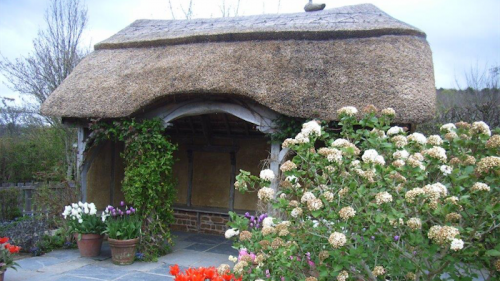
MORE than 60 million Dutch elm trees have died over the past century, but in Australia we are fortunate to not have the disease here.
It was first identified by a Dutch botanist and spread by a beetle. While we do have the beetle that spreads the disease, we don’t have the disease itself.

Elm trees, which in Canberra can be completely defoliated in mid-summer by this beetle, can be protected by an injection of insecticide.
In the case of elm trees in Britain, some trees in isolated areas appear immune to the disease and experiments are underway to clone healthy trees.
But now there’s a threat for ash trees (Fraxinus excelsior) in Britain, this time caused by Chalara fraxinea, a fungus found in the wild.
The first ash trees found to be dying were identified in Europe in the ’90s spreading to Britain as recently as 2012. The educated guess of tree experts is that 80 per cent of Britain’s 80 million ash trees will die in the next 20 years!
We just hope that this problem doesn’t arrive here as many of our street trees are Fraxinus excelsior. The fungi can be found even in sawn timber, so it is vital for our quarantine and border protection services to be eternally vigilant at our ports and airports.

VISITING a friend in Yass, I was taken by this border of Coreopsis grandiflora, the most common variety of this colourful perennial. Coreopsis originates in the US although it is popularly grown in China. A member of the sunflower family, it spreads readily from seed, so much so that in areas of Sydney it’s considered a weed along railway tracks. It grows usually with a single set of petals, however newer hybrid double varieties are now available including Sunray, which is vegetative propagated and so doesn’t set seed.
INTENDING visitors to Britain during the northern spring and summer frequently ask me for suggestions on gardens to visit. A good start is the four gardens of the Royal Horticultural Society located in various parts of the country. I have been a member of the RHS for decades and have visited all these gardens, some many times.
One is the Rosemoor garden at Great Torrington in Devon. The Rosemoor Rose Festival, from the first week in June to the end of July, is not to be missed with 2000 roses in bloom showing 200 varieties. This is just one of Rosemoor’s many display gardens, which cover 24 hectares (65 acres). All are full of ideas for the home gardener. More information at rhs.org.uk/rosemoorwhatson
Jottings…
- Only a few days until autumn, so keep an eye out for the arrival of bulbs at garden centres.
- Put off trimming evergreen hedges from tall viburnums to low box until March at the earliest. February is usually the hottest month and any new growth after trimming will be burnt.
- When harvesting pumpkins, pour paraffin wax in the soft end so they keep longer.
Who can be trusted?
In a world of spin and confusion, there’s never been a more important time to support independent journalism in Canberra.
If you trust our work online and want to enforce the power of independent voices, I invite you to make a small contribution.
Every dollar of support is invested back into our journalism to help keep citynews.com.au strong and free.
Thank you,
Ian Meikle, editor




Leave a Reply